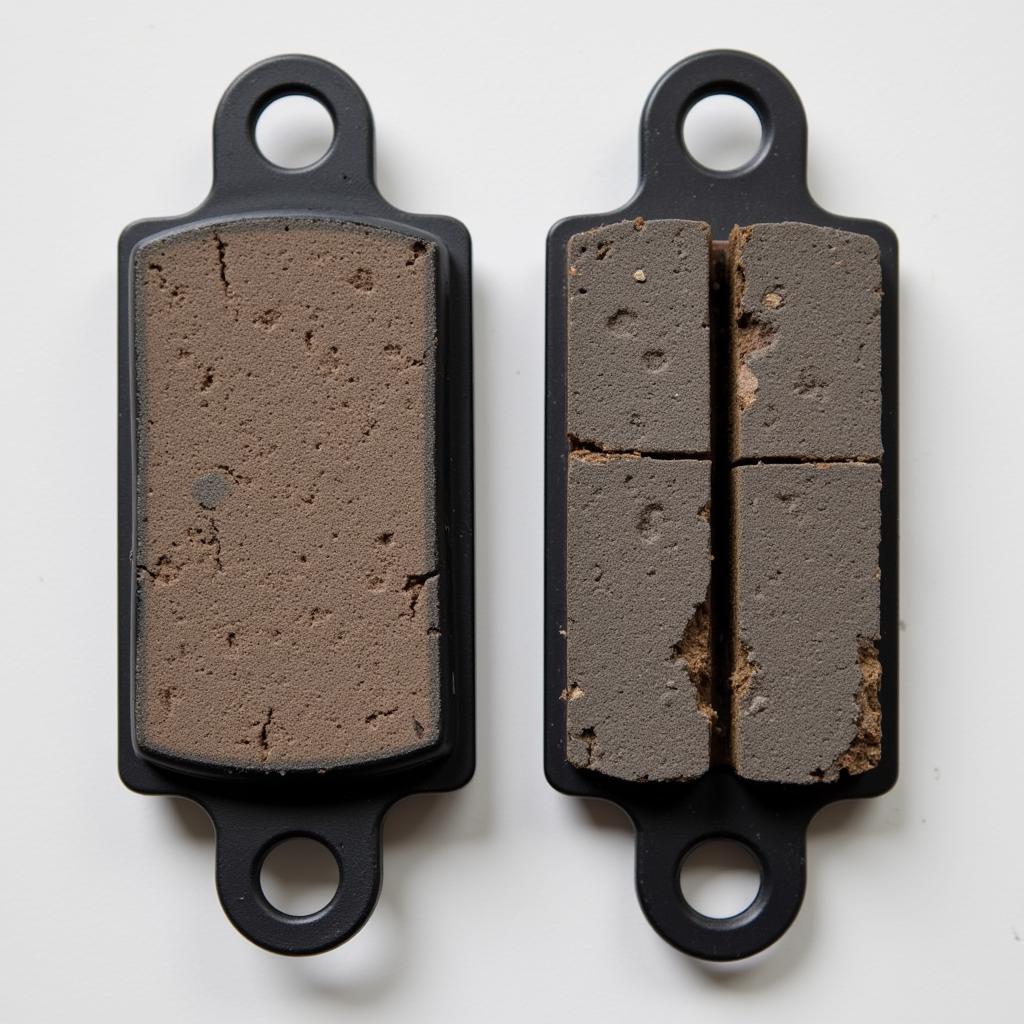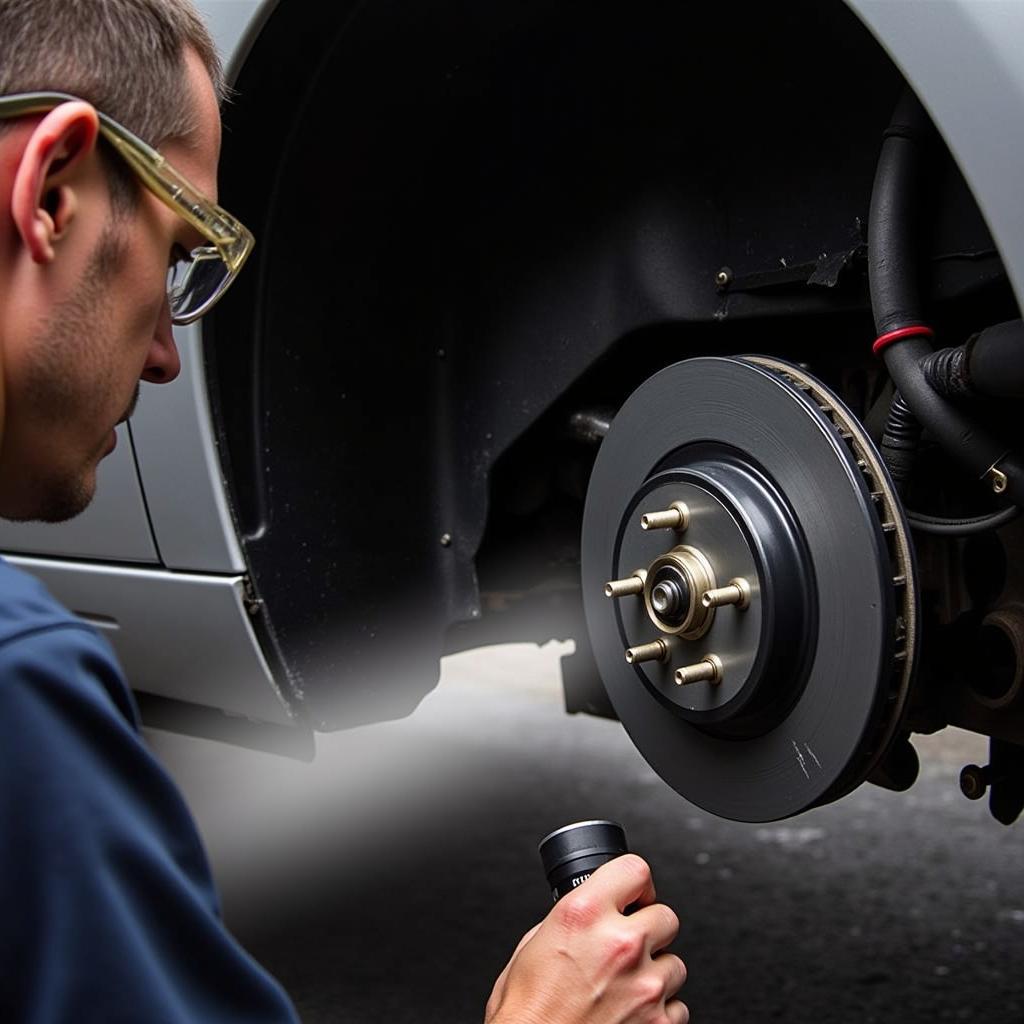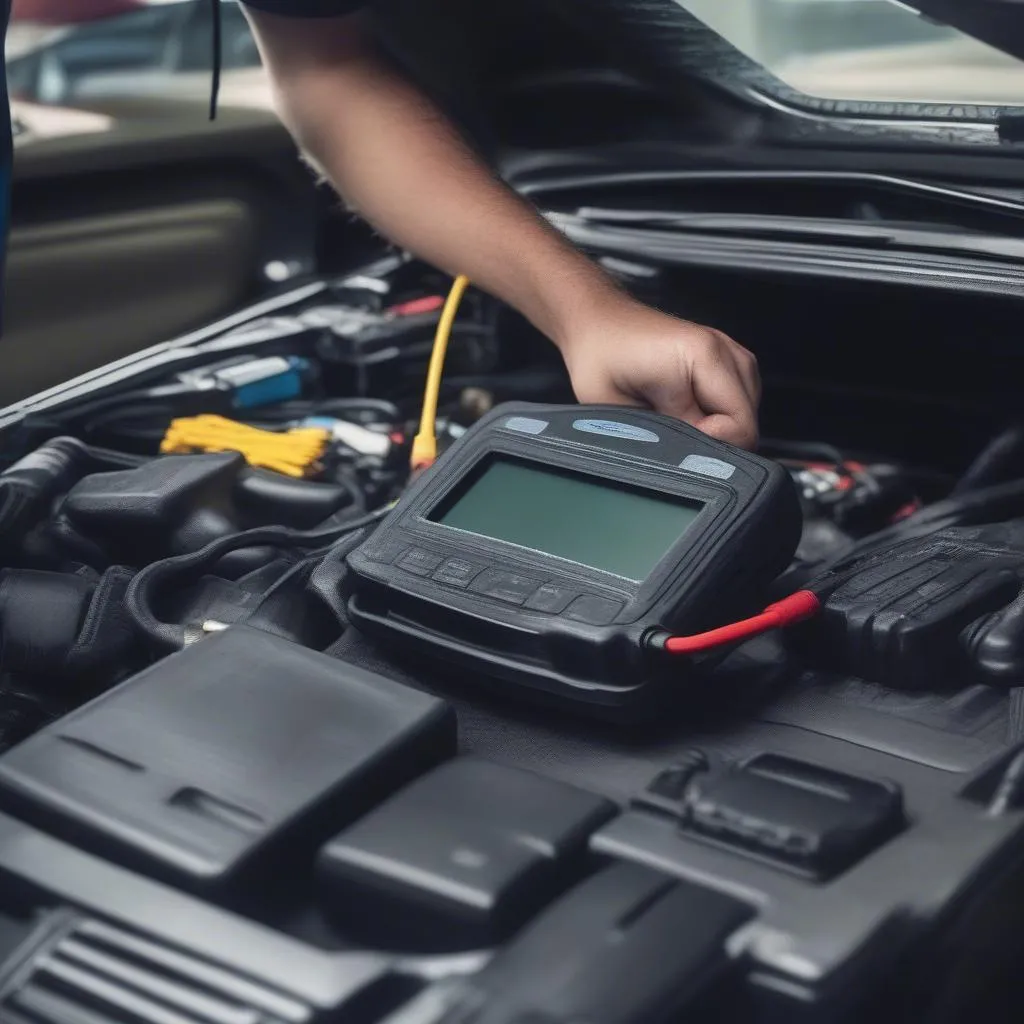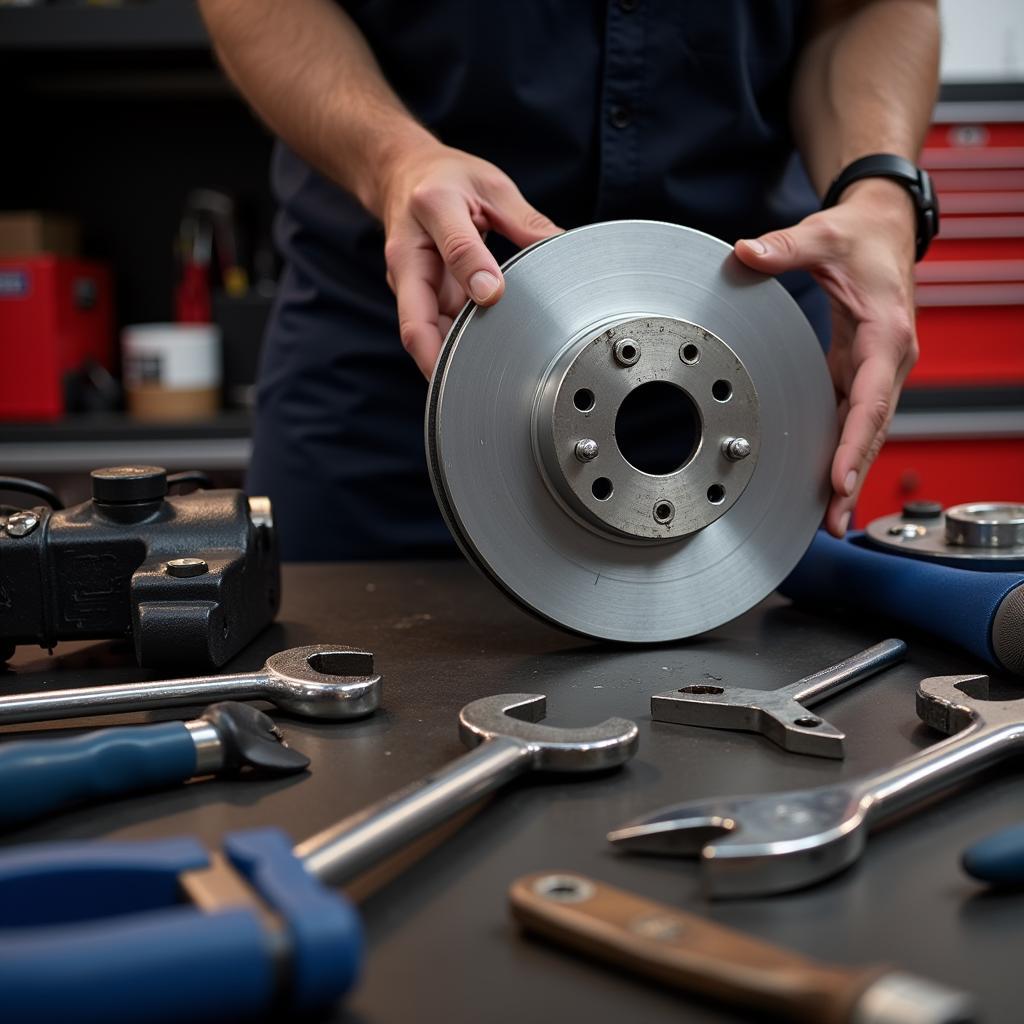The brake warning light on your dashboard is a crucial safety feature, and when it illuminates in your 2002 Chevy Malibu, it demands immediate attention. Ignoring this warning could lead to reduced braking performance and potentially dangerous situations on the road. This comprehensive guide delves into the common causes behind a 2002 Chevy Malibu brake warning light and provides you with the knowledge to address them.
Understanding Your Brake Warning Light
The brake warning light, often depicted as a circle encompassing an exclamation mark (!) or the word “BRAKE,” serves multiple purposes. When you engage the parking brake, it lights up to signal its activation. More critically, it illuminates to indicate a potential issue within your braking system.
Common Culprits Behind the Illuminated Warning
Several factors can trigger the brake warning light in your 2002 Chevy Malibu. Let’s explore the most common ones:
1. Low Brake Fluid Level
The most frequent cause is low brake fluid. Your braking system operates on hydraulic pressure, and brake fluid is the lifeblood of this system. A leak anywhere within the system can lead to a drop in fluid level, triggering the warning light.
Troubleshooting Tip: Open your hood and check the brake fluid reservoir. If the fluid level is below the “MIN” mark, it’s crucial to add the appropriate brake fluid. However, simply topping it off won’t address a leak. It’s imperative to have a professional inspect your brake system for leaks and repair them promptly.
2. Worn Brake Pads
Your brake pads are designed to wear down over time as they generate the friction needed to stop your vehicle. When they wear beyond a safe limit, the brake warning light will activate.
Troubleshooting Tip: Inspect your brake pads visually. If you see less than ¼ inch of friction material remaining, it’s time for a replacement. Consider having a professional mechanic assess the condition of your brake pads and rotors for accurate measurement and potential replacement.
 Worn Brake Pads
Worn Brake Pads
3. Faulty Brake Lines and Hoses
Brake lines and hoses carry the pressurized brake fluid to the wheels. Over time, these components can deteriorate, crack, or become damaged, leading to fluid leaks and activating the warning light.
Troubleshooting Tip: Carefully inspect your brake lines and hoses for any signs of leakage, cracks, or bulges. Due to the critical safety implications, it’s highly recommended to have a qualified mechanic handle any repairs or replacements related to your brake lines and hoses.
4. Malfunctioning ABS System
Modern vehicles, including the 2002 Chevy Malibu, are equipped with an Anti-lock Braking System (ABS). The ABS system prevents wheel lockup during hard braking, enhancing vehicle control. However, if the ABS system malfunctions, it can trigger the brake warning light.
Troubleshooting Tip: When the ABS system encounters a fault, it usually illuminates a separate ABS warning light on the dashboard. If both the brake warning light and ABS warning light are illuminated, it’s essential to have your vehicle diagnosed by a qualified mechanic equipped with a scan tool to read the ABS fault codes and pinpoint the issue.
5. Electrical Problems
While less common, electrical issues within the braking system, such as a faulty brake light switch or a short in the wiring harness, can also lead to the brake warning light illuminating.
Troubleshooting Tip: If you suspect an electrical problem, it’s best to consult a qualified auto electrician to diagnose and repair the issue accurately. Attempting to diagnose and fix electrical problems without proper knowledge and tools can be dangerous and potentially worsen the situation.
Addressing the Brake Warning Light: A Step-by-Step Guide
-
Safety First: When the brake warning light comes on, prioritize safety. Pull over to a safe location as soon as possible and assess the situation.
-
Check the Parking Brake: Ensure the parking brake is fully disengaged. Sometimes, an incomplete release can trigger the warning light.
-
Inspect Brake Fluid Level: As mentioned earlier, low brake fluid is a primary culprit. Carefully check the fluid level in the reservoir. If it’s low, add the recommended brake fluid to bring it up to the “MAX” line. However, if you suspect a leak, refrain from driving and seek professional assistance immediately.
-
Visual Inspection: Conduct a visual inspection of your brake lines and hoses, looking for any signs of leaks, cracks, or damage. Remember, this step is for preliminary assessment only. Always consult a professional for repairs.
 Inspecting Brake Lines
Inspecting Brake Lines
When to Seek Professional Help
While this guide provides insights into the 2002 Chevy Malibu brake warning light, remember that brake systems are critical safety components. If you encounter this warning light, especially if accompanied by unusual brake pedal feel, grinding noises, or pulling to one side, it’s crucial to seek professional help immediately.
Conclusion
A glowing brake warning light in your 2002 Chevy Malibu should never be ignored. By understanding its causes and taking appropriate action, you can ensure your safety and prevent potentially costly repairs. If you’re unsure about any aspect of brake system diagnosis or repair, don’t hesitate to consult a qualified mechanic. Your safety is paramount.


